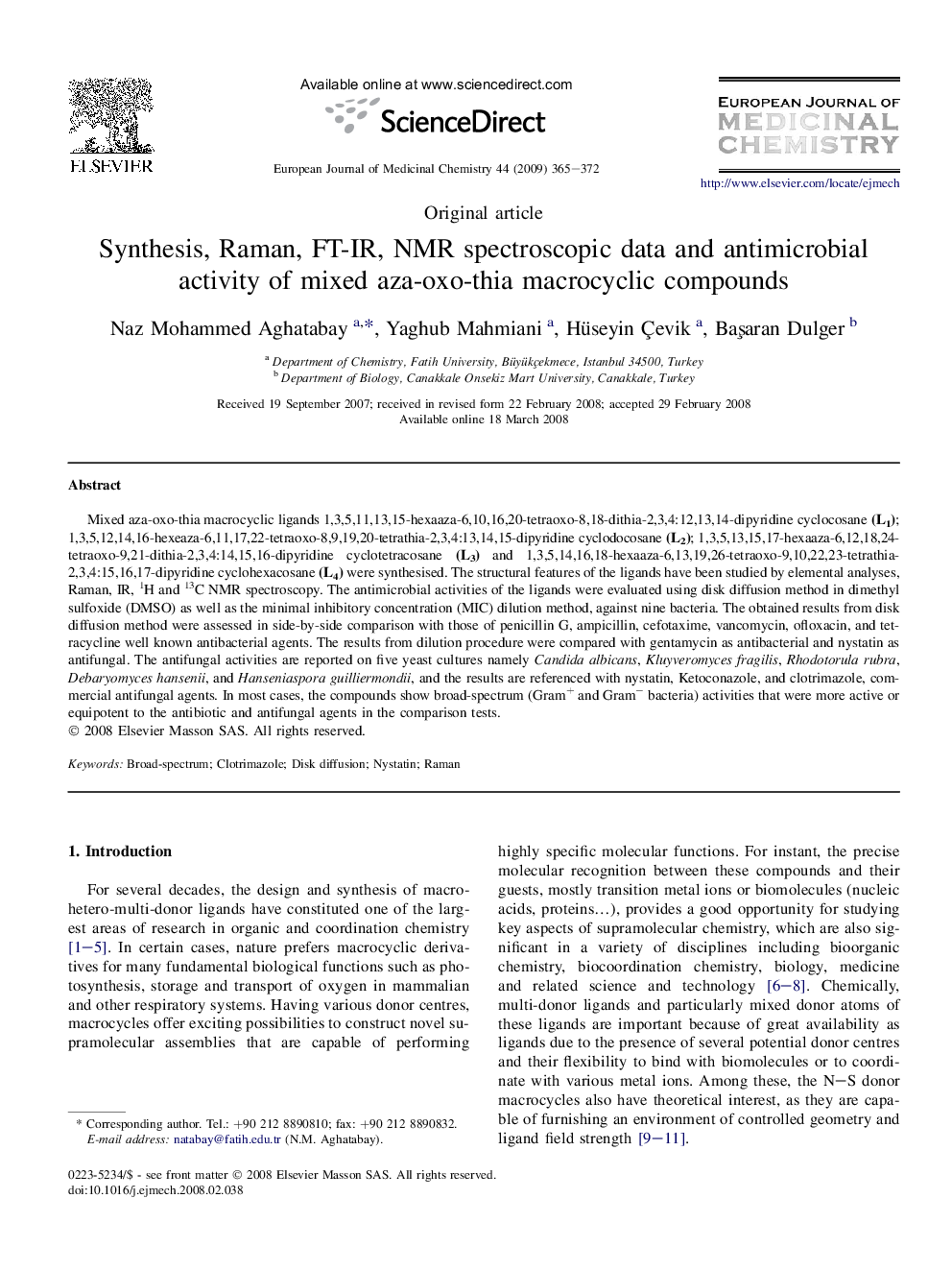| Article ID | Journal | Published Year | Pages | File Type |
|---|---|---|---|---|
| 1398059 | European Journal of Medicinal Chemistry | 2009 | 8 Pages |
Mixed aza-oxo-thia macrocyclic ligands 1,3,5,11,13,15-hexaaza-6,10,16,20-tetraoxo-8,18-dithia-2,3,4:12,13,14-dipyridine cyclocosane (L1); 1,3,5,12,14,16-hexeaza-6,11,17,22-tetraoxo-8,9,19,20-tetrathia-2,3,4:13,14,15-dipyridine cyclodocosane (L2); 1,3,5,13,15,17-hexaaza-6,12,18,24-tetraoxo-9,21-dithia-2,3,4:14,15,16-dipyridine cyclotetracosane (L3) and 1,3,5,14,16,18-hexaaza-6,13,19,26-tetraoxo-9,10,22,23-tetrathia-2,3,4:15,16,17-dipyridine cyclohexacosane (L4) were synthesised. The structural features of the ligands have been studied by elemental analyses, Raman, IR, 1H and 13C NMR spectroscopy. The antimicrobial activities of the ligands were evaluated using disk diffusion method in dimethyl sulfoxide (DMSO) as well as the minimal inhibitory concentration (MIC) dilution method, against nine bacteria. The obtained results from disk diffusion method were assessed in side-by-side comparison with those of penicillin G, ampicillin, cefotaxime, vancomycin, ofloxacin, and tetracycline well known antibacterial agents. The results from dilution procedure were compared with gentamycin as antibacterial and nystatin as antifungal. The antifungal activities are reported on five yeast cultures namely Candida albicans, Kluyveromyces fragilis, Rhodotorula rubra, Debaryomyces hansenii, and Hanseniaspora guilliermondii, and the results are referenced with nystatin, Ketoconazole, and clotrimazole, commercial antifungal agents. In most cases, the compounds show broad-spectrum (Gram+ and Gram− bacteria) activities that were more active or equipotent to the antibiotic and antifungal agents in the comparison tests.
Graphical abstractThe following mixed aza-oxo-thia macrocyclic ligands (L1–L4) were synthesised. The structural features of these compounds have been studied by elemental analyses, Raman, IR, 1H and 13C NMR spectroscopy. The antimicrobial activities of the ligands were evaluated using disk diffusion method as well as the minimal inhibitory concentration (MIC) dilution method, against several bacteria and yeast cultures. The results were compared with well known antibacterial and antifungal agents.Figure optionsDownload full-size imageDownload as PowerPoint slide
